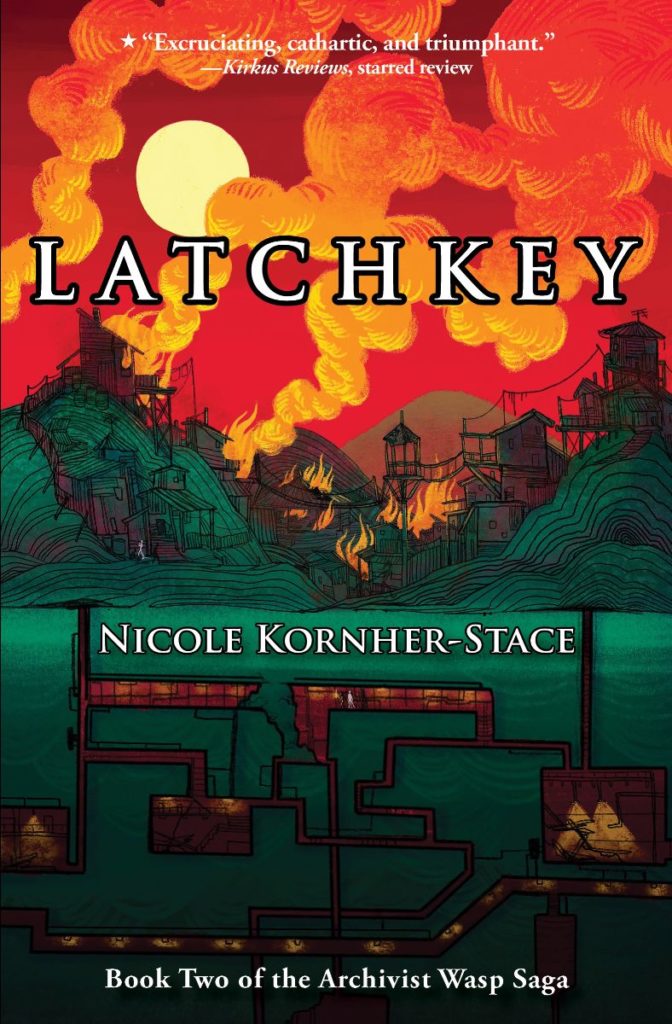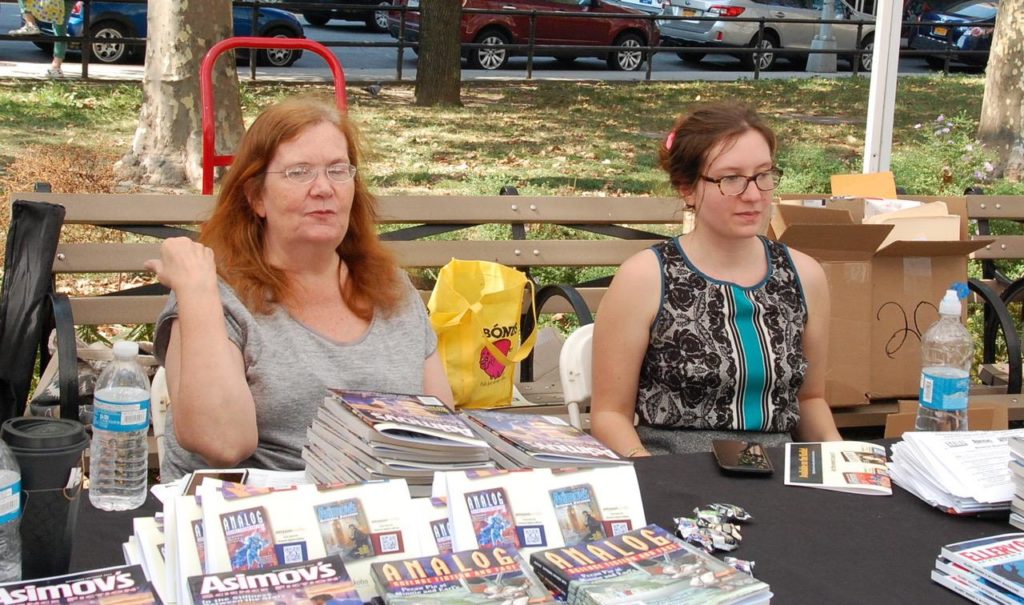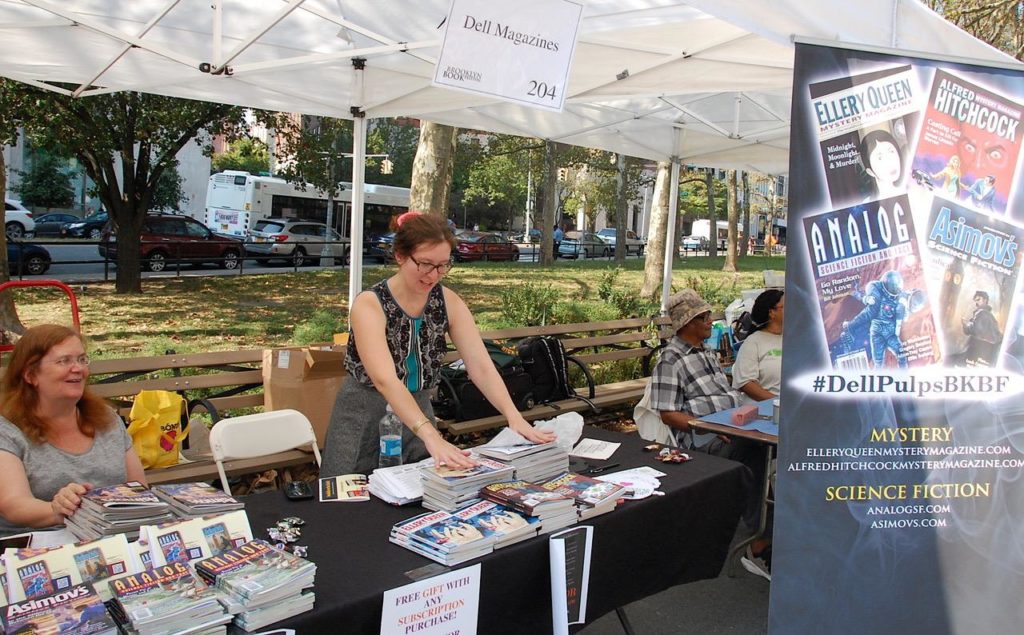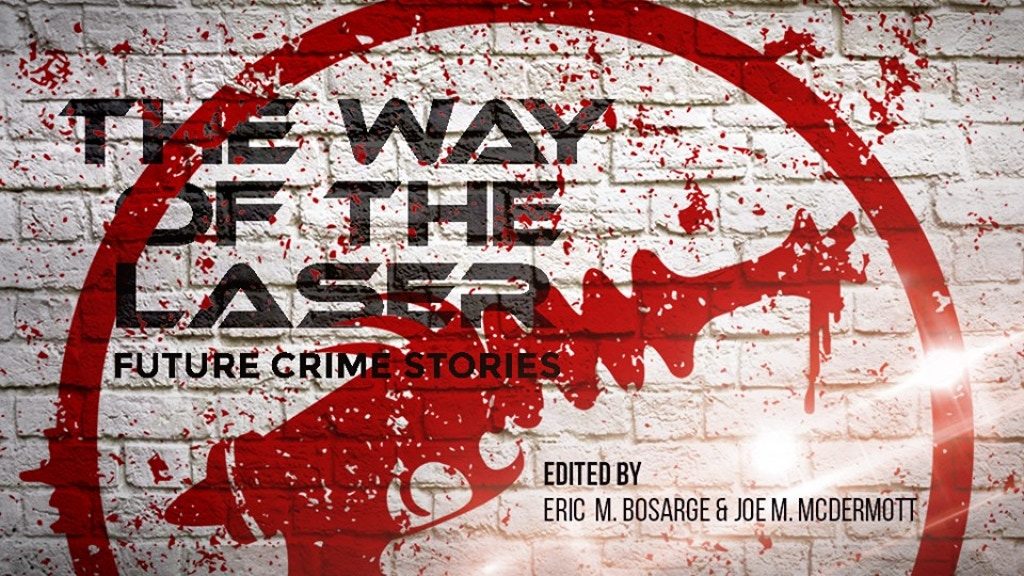(1) LOTS OF PLOTS. Vanity Fair’s Anthony Breznican gets Christopher Markus and Stephen McFeely to share secrets about how the biggest film in history was assembled—including alternate and abandoned story lines that might have been: “How the Avengers: Endgame Writers Made Life-and-Death Decisions”.
Was Marvel ever like, “There are too many dollar signs in this scene?”
Markus: No, it was, “You better damn well have a good story for us!”
McFeely: You actually try not to leave the five-dollar-signs on the sidelines.
So you’re popping those cards on there, drawing a timeline for the story. How does it look?
McFeely: In the beginning stages it’s a, Oh, wouldn’t it be interesting if Groot and Rocket and Thor went on a journey together? What kind of chemistry could you get from that? But also, we took this job because it scared the hell out of us, because that first movie has 23 [main] characters in it.
First movie meaning Infinity War?
McFeely: If you know that movie, and you know how we ended it, it was in large part just so the second movie would have fewer characters. And we could work with that! [Laughs] We started with 65 characters. I mean, it’s just everyone who was vaguely alive. And when we narrowed it down, you don’t want 23 people in a scene—ever. So that’s what the cards were for, to sort of—
(2) BESTSELLER STATS. [Item by Dann Todd.] I found this analysis/graphic of the 300 top NY Times bestselling novels from 2011 to 2018 and you might find it to be of interest. The chart shows the novels by genre, whether they were stand-alone works or part of a series, and the respective Goodreads ratings.
Of those 300 books, 11 were science fiction, 12 were fantasy and 10 were horror.
- The science fiction works spent a cumulative 72 weeks on the NYTimes bestsellers list. Four of the eleven works were from a series. The Goodreads ratings ranged from roughly 3.2 to 4.3.
- The fantasy works spent a cumulative 93 weeks on the list. Eleven of the twelve works were from a series. The Goodreads ratings ranged from 3.3 to 4.4.
- The horror works spent 69 weeks on the list. Only two of the ten books were from a series. The Goodreads ratings ranged from 3.8 to 4.8.
(3) FOURTHCOMING TREK FILM. Inverse seems pleased: “Noah Hawley’s ‘Star Trek 4’ promises to boldly go to trippy new worlds”.
Fans of the 2009 Star Trek cinematic reboot universe were let down last year, when news broke that the planned fourth film in the franchise would not be moving forward. Initially rumored to feature the return of Thor actor Chris Hemsworth as Captain Kirk’s father, negotiations reportedly broke down between the studio and Hemsworth (as well as series star Chris Pine). After box office for the reboot’s third installment, Star Trek: Beyond, fell short of expectations, it seemed the new Trek universe was dead, despite being a box office juggernaut just a few years prior.
That all changed today when news broke that not only will there be a fourth Trek film, but that it will be helmed by visionary TV director Noah Hawley, who’s responsible for both Legion and Fargo on FX.
(4) FIRST STEPS. The Writer offers “Pro tips for writing and publishing speculative fiction” of a rather general nature.
Science fiction versus fantasy
…“There is a little bit of a gray area there,” says [Daniel José] Older, “but I think of science fiction as generally and mostly focused on the technological aspect and fantasy focused on the magical aspect.” Yet he notes that this separation is a “little too easy.”
Perhaps a science fiction expert could give us a definitive answer.
“One answer, per science fiction scholar James Gunn, is that science fiction is about things that could happen or could have happened, and that fantasy could not happen, at least in our consensual understanding of what is possible,” Johnson says. But this definition is somewhat problematic, she states, since “this disregards a lot of things,” one being that “our understanding of what is possible changes regularly.”
(5) NEXT STEPS. Fortunately, more pro tips are on the way.
(6) ZINES AND MUSIC. Boo-Hooray profiles the “The Lenny Kaye Science Fiction Fanzine Library at the University of Miami”.
Lenny Kaye (b. 1946) is the guitarist for the Patti Smith Group and also a music historian and journalist. He compiled the 1960s garage rock compilation Nuggets in 1972, which had a profound impact on the development of Punk rock. Lenny’s early influences as a writer and enthusiast in music developed during his time in science fiction fandom. This collection of approximately 2100 fanzines is Lenny’s personal library.
Science fiction was one of the early subjects that spawned a substantial network of self- published magazines and newsletters, done primarily via mimeograph. Ranging from 1941 to 1971, the fanzines in this collection represent ground zero for the zine explosion that was to come years later in rock, punk, skate, fashion, and art. They are the origination of modern DIY publishing.
…Lenny’s own fanzines (Obelisk, Sadistic Sphinx, Hieroglyph, and Pharaoh) are a perfect example of how many SF editors transformed into music journalists and performers. The connection between SF and music fandom may seem an odd gap to bridge, but a number of big names in music journalism, such as Lester Bangs, Paul Williams, and Greg Shaw wrote for science fiction fanzines.
(7) TODAY IN HISTORY.
- November 20, 1964 — A U.K. adaptation of H.G. Wells’ First Men in the Moon was released into theatres, this one complete with special effects by Ray Harryhausen. Starring Edward Judd, Martha Hyer and Lionel Jeffries, the British press loved it, the American press not so much. It’s got a 75% rating at Rotten Tomatoes.
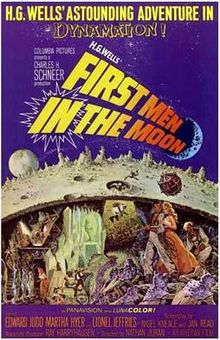
- November 20, 2007 — The Wizard of Oz Munchkins received a star on Hollywood’s Walk of Fame.
(8) TODAY’S BIRTHDAYS.
[Compiled by Cat Eldridge.]
- Born November 20, 1929 — Jerry Hardin, 90. He’s best known for playing Deep Throat on The X-Files. He’s also been on Quantum Leap, Starman, Brimstone and Strange World, plus he was in the Doomsday Virus miniseries. And he made a rather good Samuel Clemens in the two part “Time’s Arrow” story on Next Gen.
- Born November 20, 1932 — Richard Dawson. Usually one appearance in a genre film or show isn’t enough to make the Birthday list but he was Damon Killian on The Running Man, a juicy enough role to ensure his making this list, and twenty years earlier he was Joey on Munster, Go Home! He’d voiceLong John Silver on an animated Treasure Island film in the Seventies as well. And he had a one-off on the classic Fantasy Island. (Died 2012.)
- Born November 20, 1933 — John Gardner. Grendel, the retelling of Beowulf from the monster’s viewpoint, is likely the only work he’s remembered for. Gudgekin The Thistle Girl (and Other Tales) are genre fairy tales as are The King of the Hummingbirds (and Other Tales); A Child’s Bestiary is, well, guess what it says it is. Mickelsson’s Ghosts, his final novel written before his untimely death, is a ghost story. (Died 1982.)
- Born November 20, 1954 — Richard Brooker. Actor and stuntman, likely best known for being in Friday the 13th Part III as Jason Voorhees. He certainly did some other genre films too, such as the Argentinian Deathstalker (Cazador de muerte) and being the lead in Deathstalker. (Died 2013.)
- Born November 20, 1956 — Bo Derek, 63. She makes the birthday list for being Jane Parker in Tarzan, the Ape Man. Ok, it’s a really bad film redeemed only by her showing lots of skin. There’s also Ghosts Can’t Do It and Horror 101 as wellas the two Sharknado films she just did.
- Born November 20, 1959 — Sean Young, 60. Rachael and her clone in the original Blade Runner and the sequel. More intriguingly she played Chani in Dune. A bit old for the role, wasn’t she? She was the lead, Helen Hyde, in Dr. Jekyll and Ms. Hyde. And she’s a Trekkie as she was in the Star Trek: Renegades video fanfic pilot as Dr. Lucien.
- Born November 20, 1963 — Ming-Na Wen, 55. She‘s best known as Melinda May on Agents of S.H.I.E.L.D. but she was also Camile Wary on Stargate Universe, and had an intriguing role as Senator Michaela Wen on Eureka. I see she’s going to be Fennec Shand on the new Mandalorian series.
(9) COMICS SECTION.
- Foxtrot illustrates the ways a shape-shifting demon can help you study.
- Cul de Sac shows how you know when a book series is coming to an end.
(10) COMIC RECOMMENDATION. [Item by N.] Der-shing Holmer’s webcomic Mare Internvm is about to end (5 pages left). Pre-orders are open for physical copies. I really do recommend it, it’s a fine read.
(11) SOMETHING TO SINK YOUR TEETH INTO. “The archaeology of plaque (yes, plaque)” at The Harvard Gazette.
Not many people can get excited about plaque, but Christina Warinner loves the stuff.
The recently appointed assistant professor of anthropology in [Harvard Faculty of Arts and Sciences] and Sally Starling Seaver Assistant Professor at the Radcliffe Institute, Warinner was among the first researchers to realize that calcified plaque, otherwise known as dental calculus, could shed new light on everything from ancient diet and disease to the spread of dairying and the roles of women in society.
“It’s like a time capsule,” she said. “It’s the single richest source of ancient DNA in the archaeological record. There are so many things we can learn from it — everything from pollution in the environment to people’s occupations to aspects of health. It’s all in there.”
And it was a discovery, Warinner said, that happened almost entirely by accident.
After receiving her Ph.D. from the Graduate School of Arts and Sciences in the Anthropology Department’s archaeology program, the Kansas native took a postdoc at the University of Zurich in what was then the new Center for Evolutionary Medicine. There she set out to investigate whether it would be possible to identify pathogens in the archaeological record to study the evolution of diseases. She chose dental caries, or cavities, as a case study, because they are visible amid skeletal remains and abundant in the archaeological record. She set out to examine whether the bacteria that caused caries in ancient teeth could be identified genetically.
“I started to notice all this dental calculus, which is very common on teeth, and was always getting in the way,” she said. “Most people would just take it off and throw it away, but I thought it could be interesting, so I turned that thought around and looked at it from a different angle.
“As a side project, I started applying genomic and proteomic techniques to it, which hadn’t been done before,” she continued. “It’s not perfect, and not everything preserves … but it turns out we can say an awful lot about the past through calculus.”
Applying genomic tools has allowed Warinner to get the clearest picture yet of not only ancient genomes, but ancient microbiomes as well.
(12) HAVE YOU SEEN THE LIGHT. The Harvard Gazette also explains how “New laser paves way for better imaging, communications”.
The terahertz frequency range — which sits in the middle of the electromagnetic spectrum between microwaves and infrared light — offers the potential for high-bandwidth communications, ultrahigh-resolution imaging, precise long-range sensing for radio astronomy, and much more.
But this section of the electromagnetic spectrum has remained out of reach for most applications. That is because current sources of terahertz frequencies are bulky, inefficient, have limited tuning, or must operate at low temperature.
Now, researchers from the Harvard John A. Paulson School of Engineering and Applied Sciences (SEAS), in collaboration with the Massachusetts Institute of Technology and the U.S. Army, have developed a compact, room-temperature, widely tunable terahertz laser.
…To understand what they did, let’s go over some basic physics of how a laser works.
In quantum physics, excited atoms or molecules sit at different energy levels — think of these as floors of a building. In a typical gas laser, a large number of molecules are trapped between two mirrors and brought to an excited energy level, aka a higher floor in the building. When they reach that floor, they decay, fall down one energy level, and emit a photon. These photons stimulate the decay of more molecules as they bounce back and forth, leading to amplification of light. To change the frequency of the emitted photons, you need to change the energy level of the excited molecules.
So, how do you change the energy level? One way is to use light. In a process called optical pumping, light raises molecules from a lower energy level to a higher one — like a quantum elevator. Previous terahertz molecular lasers used optical pumps, but they were limited in their tunability to just a few frequencies, meaning the elevator only went to a small number of floors….
Also see the Science report: “Widely tunable compact terahertz gas lasers”.
(13) BIG ROOMBA. BBC wants to know, “Would you rent a vacuum cleaner for $499 a month?”
Vacuum cleaning is a chore many people are happy to outsource, but one company is trying to persuade firms to swap an automated service for human cleaners.
Softbank, the Japanese firm behind WeWork and Uber, has launched a self-powered machine, dubbed The Whiz, at a hefty price tag of $499 (£381) a month.
Softbank says its robot is meant to replace “over-worked janitorial teams.”
The Whiz is not initially automatic, as a human has to lead it around until it can learn the cleaning route.
It has been developed by Softbank’s US robotics arm and Hong Kong-based firm Intelligent Cleaning Equipment.
The three-feet-tall (0.9 metres) vacuum was initially only offered for rent in Japan and Hong Kong.
The machine sends an alert if there is an issue, such as bumping into a wall. After three hours, it can cover 15,000 square feet (1,394 square metres) but then will need a battery change.
(14) BAUM’S AWAY. Andrew Porter tuned in last night to Jeopardy! and witnessed this:
Category: Authors’ Fictional Places
Answer: “Loompaland.”
Wrong Question: “Who is Baum?”
(15) LOSE RESPONSIBLY. BBC reports “UK gambling machines loaded with AI ‘cool off’ system”.
Every gambling machine in the UK’s betting shops is being updated with software designed to detect and prevent problematic behaviour in players.
The system locks gamblers out of machines for 30 seconds if erratic or excessive play is detected.
While the brief lockdown is in effect, warnings about safe gambling are displayed on the machines’ screens.
One expert said the enforced break was “probably not long enough to have a positive effect”.
…Among the behaviour patterns it tries to detect are chasing losses, spending too long on a single machine and playing a succession of games rapidly.
(16) NUMBER TWO. “50 Years Ago, Americans Made The 2nd Moon Landing… Why Doesn’t Anyone Remember?” asks NPR. Maybe it’s the crappy dialogue?
Fifty years ago, astronaut Pete Conrad stepped out of the lunar module onto the surface of the moon.
His first words were: “Whoopie! Man, that may have been a small one for Neil, but that’s a long one for me.”
…Conrad[‘s] first words as he stepped onto the surface were actually part of a bet with a journalist, Muir-Harmony says. She had asked Conrad whether the U.S. government had dictated Neil Armstrong’s first words. “And he made a bet (I think it’s about a $500 bet) saying, ‘No, we can say whatever we want. We’re not being told what to say by the government.'”
(17) VASTER THAN LIBRARIES. Atlas Obscura explores “The Uncertain Future of the World’s Largest Secondhand Book Market”.
At the College Street market in Kolkata, India, independent booksellers fear the arrival of a massive mall.
…College Street, known by locals as Boi Para (which roughly translates to “Book Town”), spans more than a mile and covers a million square feet. Bigwigs of Bengali publishing coexist with makeshift stalls hammered together from wood, bamboo, tin, and canvas, in a chaotic matrix that runs from Mahatma Gandhi Road to Ganesh Chandra Avenue.
College Street has every imaginable type of text, available in Bengali, English, Mandarin, Sanskrit, Dutch, and every dialect in between. Precious first editions and literary classics sit cheek by jowl with medical encyclopedias, religious texts, and pulp fiction, often precariously stacked in uneven piles that resemble jagged cliff faces. Wily booksellers peer from raised wooden stalls; bearded collectors rifle through stock; mothers drag first-year university students through the aisles to collect their required reading.
[Thanks to Chip Hitchcock, JJ, Mike Kennedy, Cat Eldridge, Dann, Darrah Chavey, Martin Morse Wooster, N, Michael Toman, John King Tarpinian, and Andrew Porter for some of these stories. Title credit goes to File 770 contributing editor of the day Soon Lee.]


